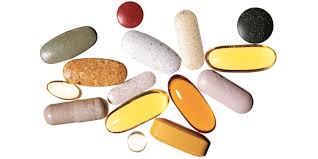Quality Vitamin Aspects - Raw Materials
 Friday, February 5, 2010 at 11:28AM
Friday, February 5, 2010 at 11:28AM QUALITY DECLARATIONS
It is doubtful you will find a company that proclaims "we use lower quality materials to make our vitamins more affordable." Every company says they use the "highest quality" available. Tests reveal that this is Unfortunately simply not true. There is usually a certain percentage of products that fail quality tests. Some nutrients have higher quality failure reports than other nutrients. Plus it is possible for a product to meet label dosages but still be of lower quality. Here are the ways this can happen. 
- The material is low quality and the manufacturer does not test to verify it measures up.
- The material is low quality but spiked with the active ingredient to test at label dosage levels.
- The material measures up but is contaminated with heavy metals such as lead or pathogenic organisms, such as E coli bacteria.
- The material is quality but faulty manufacturing methods fail to properly mix materials so each tablet or capsule has the exact amount listed on the label. Government standards allow up to a 10% over/ under dosage range.
- The material is quality, but lower manufacturing processes or/and formula element interactions allow the material in capsules, tablets, softgels, and especially in liquid delivery systems to breakdown and oxidize before the expiration date.
- Each time a bottle is opened, oxygen enters and increases potential degredation actions.
- "Natural" on labels to refer to the source of the material has been so abused that it is essentially meaningless today. Even if a natural source is listed, it is no guarantee that synthetics have not been added at some point. i.e. nutritional yeast and cultured "whole food" vitamins.
The FDA in charge of monitoring vitamin companies to protect the Consumer recently issued a new regulation dictating Good Manufacturing Practices (GMP) which have to be followed. While these will improve many aspects of quality, they are no guarantee of total quality either. GMP's are about a paper trail to show how it was built, not the quality of raw materials used and although sources must be be included and traceable, this would not become public knowledge.
Here is an analysis from the FDA's website: "DSHEA's statutory framework requires FDA to utilize such tools as good manufacturing practices (GMPs), labeling rules and adverse event reporting to identify and address potential health risks to consumers associated with the use of dietary supplements. As a preventive measure, DSHEA grants FDA explicit authority to establish GMP regulations for dietary supplements. Such regulations would provide a mechanism to help assure quality, purity and consistency in dietary supplement products. Recognizing the utility of GMPs in helping to ensure the safety of dietary supplement products,..." DSHEA was passed in 1994. Just last year the FDA finally issued the GMPs which take effect over the next couple of years.
PURITY GRADES
Not all vitamin brands are equal in quality. One aspect that is seldom if ever mentioned or known by the public, is in the area of purity percentages of raw materials. For example:
- Vitamin B1 bulk powder might come in 50%, 70%, 89%, 95%, or 98% purity grades.
- Vitamin Companies use the 98% level, but you would not know if a company used the 95% instead. Labels do not specify. The 95% material has the same B1, but there would be a 150% greater amount of (sometimes) unknown impurities present over the 98% grade.
- Generally, 98% or better is pharmaceutical or food grade. Lower percentages are used for in animal feed or plant fertilizers.
- A chemical analysis is needed to determine purity percentages.
- 100% Psyllium is available in 75% or 95% purity grades. That is a very large difference in IMPURITY amounts.
Here is a definition of production method for vitamin B2 from www.noshly.com. "Riboflavins: Various biotechnological processes have been developed for industrial scale riboflavin biosynthesis using different microorganisms, including filamentous fungi such as Ashbya gossypii, Candida famata and Candida flaveri, as well as the bacteria Corynebacterium ammoniagenes and Bacillus subtilis. The latter organism has been genetically modified to both increase the bacteria's production of riboflavin and to introduce an antibiotic (ampicillin) resistance marker, and is now successfully employed at a commercial scale to produce riboflavin for feed and food fortification purposes. The chemical company BASF has installed a plant in South Korea, which is specialized on riboflavin production using Ashbya gossypii. The concentrations of riboflavin in their modified strain are so high, that the mycelium has a reddish / brownish color and accumulates riboflavin crystals in the vacuoles, which will eventually burst the mycelium."
QUALITY OF RAW INGREDIENT
Vitamin manufacturers that do not have their own labs have to rely on a "certificate of analysis" provided with the bulk vitamin material from the supplier saying it meets purity standards. Many vitamin companies test raw materials before building products, but after a few clean tests from the same supplier, only a test every third lot would generally surfice, but does leave the door open for contamination. It is very expensive to test every batch, but that is what most large vitamin companies must do to protect their name. Once vitamins are manufactured, the finished tablet or capsule has to be tested again to make sure they each have the correct dose and did not become contaminated in the manufacturing process. Consumer watchdog groups often spot test products for quality. These tests reveal that there are wide variations between the different brands in maintaining correct dosages and / or quality. Plus, a product label may be technically correct, but still use a lower quality raw material. Examples:
- Conjugated Linoleic Acid (CLA) products may all list the same amount of CLA, but the configuration of the different molecular arrangements can vary which could impact body action potential. ref The C9,T11 and the T10,C12 isomers on weigh loss or cholesterol profile.
- Lactobacillus Acidophilus, one of the beneficial intestinal bacteria, on a label does not reveal the whole story of effectiveness. There are numerous bacterial "cousins" all with the same name but research has shown they can exhibit wide effectiveness ranges. A code of letters and numbers often follows the bacteria name that specifies a particular DNA tested bacteria strain was used and where it was developed, ie. NCFM stands for North Carolina (University developed) Food and Microbiology, ROO52 stands for the 52th strain developed by Institute Rosell, one of the oldest probiotic companies. Strain codes are registered with an international organization so Scientists doing research can identity and test specific effective actions of coded strains. A generic bacterial strain without a code would never be used in research.
- Gingko Biloba products all might meet standards of 24% ginkgoflavonglycosides and 6% terpene lactones, BUT not meet the proper percentage composition for the terpenes, ie Ginkgolides A,B,C, and Bilobalide. Lower quality Ginkgo will not contain the proper composition % and thus have lower activity levels, but this would not be reflected on the label.
- Enzymes need to have listed on their labels the unit activity levels and not just give a milligram (weight) amount. Enzymes can have similar weights but vastly different unit activity levels.
- There are many nutrients with quality differences such as these.
Plus, some companies develop their own terminology to attempt to distinguish their product from competing brands. Often these terms have little if any scientific meaning. Marketing is by design created to "rose color" a product's image and gain an advantage, even if not meaningful.
SIDEBAR: Automobile gasoline comes in different grades, such as regular and super. And while the octane ratings for the different brands of regular gas are all the same, there are "quality" differences in how the gasoline burns and the amount of residues they leave behind. Cleaner burning gasoline, called Top Tier, will not wear out a car's engine quite as fast.
HOW VITAMINS ARE MADE on Quality
Vitamins are naturally made by Nature in a variety of ways. They can be built in growing plants, like rice, and also in animals. The "in animals" is a little tricky since by definition, Vitamins have to be supplied from an outside source for humans. Most animals can naturally produce their own Vitamin C by converting glucose, a blood sugar. Only a few different animals along with humans have lost this ability. Other vitamins like vitamin K are almost produced inside the body but really are made by Bacteria in the intestinal track. Vitamin D is produced by the action of sunlight on skin exposure turning cholesterol into a precursor form that is later turned into Vitamin D in the Liver and Kidneys. This makes Vitamin D more of a hormone and not a true vitamin.
Methods of synthetic vitamin production include chemical conversions from distillates of petroleum or coal tar with the help of chemical reactions between organic chemicals and/or microbes and enzymes in controlled pH baths. A few synthetic vitamins also use bacteria as the starting material and fermentative or enzymatic transformation actions for some stages of production. New discoveries now with the aid of genetically modified bacteria can almost totally use fermentative actions for many supplement nutrients. ref Vitamin B12 can only be produced by a fermentative process. The preceding reference compares synthetic vitamin B2 to the fermentative process synthetic B2. In animal studies, the purely chemical synthetic B2 was better tolerated than the more natural fermentative process using the GMO bacteria, Bacillus Subtilis. ref This next Reference gives the best explanation or really close to how the different types of vitamins are manufactured. ref
The major consideration between natural and synthetic vitamins is over their ability to generate in the body the vitamin co-enzyme forms the body uses. Some synthetic vitamins are practically identical to natural vitamins in this aspect while others are not close and exhibit limited capacity. More on this in another section.
SUMMARY
The consumer would not be expected to be aware of these quality aspects, thus having someone with such knowledge, or the where-with-all to find out, to help create guidelines for you would be immensely valuable, even if there were some shortcomings. Enter Vitamin Workshop, a vehicle that attempts to offer the vitamin consumer a fighting chance of survival against the jungle of supplement rhetoric and choices. Supplying Knowledge for your healthy choices is our only objective. There is an intelligent way to use vitamin supplements.
